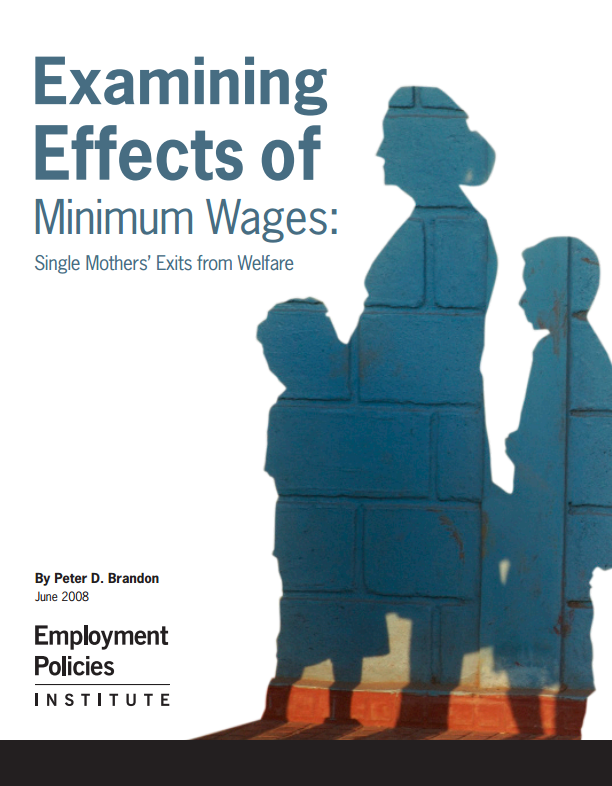The primary aim of minimum wage policies is to enable individuals and families to achieve economic security and independence without recourse to government assistance (Brown at al. 1982, 1983; Ellwood 1988). Although minimum wage policies aim to raise the living standards of workers, most economic studies based upon standard models of labor demand and supply show that such wage gains are trumped by higher levels of disemployment (Brown 1988). With only a few exceptions, the majority of studies provide strong evidence of a disemployment effect among the least-skilled workers when minimum wages are increased (Neumark and Wascher 2007).
Nowadays, the literature on the disemployment effects of minimum wages is voluminous. However, the literature still contains large knowledge gaps. A particularly conspicuous hole in the literature, which has significant policy implications, is the lack of understanding about the relationship between minimum wages and welfare recipiency. Presently, most of the minimum wage literature focuses on high school dropouts and teenagers, with some attention paid also to poor adults (Card 1992a, b; Card and Krueger 1994, 1995; Currie and Falick 1996; Neumark and Wascher 1992, 1994; Deere, Murphy, and Welch 1995). But analysis of the potential effects of minimum wages on the economic fortunes of single mothers, including their receipt of welfare, has been understudied except for a handful of papers (Brandon 1995a; Turner 1999; Page et al. 2005; Sabia 2007).
Despite limited research on the relationship between welfare receipt and minimum wage policies, minimum wages could potentially affect welfare participation among single mothers. Recent research suggests that a sizable minority of single mothers, both on and off welfare, work (Brandon 1995b), and that they are willing to accept jobs with wages approximating the federal minimum wage (Page et al. 2005). Logically, if higher minimum wages lower demand for the least-skilled workers, then minimum wages might push single mothers onto welfare or diminish their chances of leaving welfare through work.
This study attempts to reduce the gap in knowledge about the effects of minimum wage increases on single mothers’ economic prospects by examining the relationship between higher minimum wages and prolonged welfare dependency among single mothers. Apart from Brandon (1995a) and Turner (1999), the link between minimum wages and the duration of welfare receipt among single mothers remains obscure.
Increasing knowledge on this topic is especially important in the current era of cash assistance for the poor. Passage of the Personal Responsibility and Work Opportunity Reconciliation Act of 1996 (PRWORA) meant that single mothers on welfare must work or face sanctions and that the cumulative amount of time for which they could receive welfare payments is limited. As well, around the same time as the passage of PRWORA, Congress and state legislative assemblies passed laws increasing minimum wages, perhaps assuming that higher minimum wages would provide greater financial incentive for welfare recipients to move from welfare to work, and thereby avoid welfare reform’s new punitive measures.
In this study, variation in minimum wages across states and over time is used to identify the effect of higher minimum wages on exits from the Temporary Assistance for Needy Families/Aid to Families with Dependent Children (TANF/AFDC) program among single mothers. Results suggest that higher minimum wage levels and minimum wage increases lengthen the duration of TANF/AFDC receipt among single mothers.
Higher minimum wages may therefore lead to disemployment among welfare mothers: an effect found previously for other low-wage workers. The findings reported here suggest that minimum wage policies might thwart welfare reform policies mandating work among welfare mothers and placing time-limits on benefits. Even if some low-skilled single mothers achieve economic independence, their gains need weighing against the losses faced by others who have their time on welfare extended.
